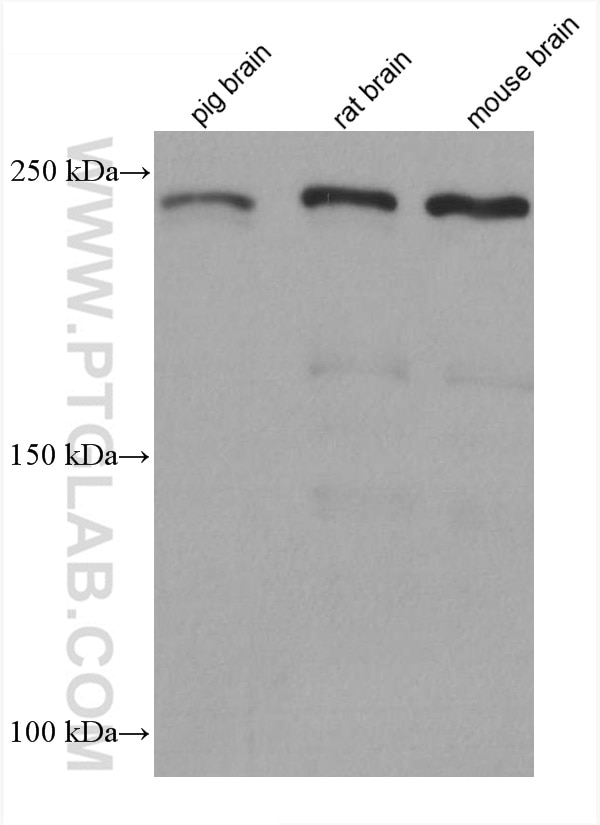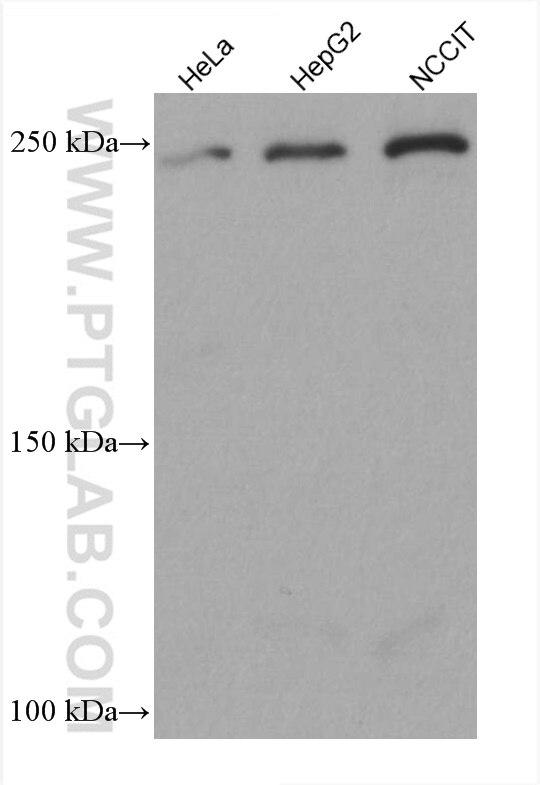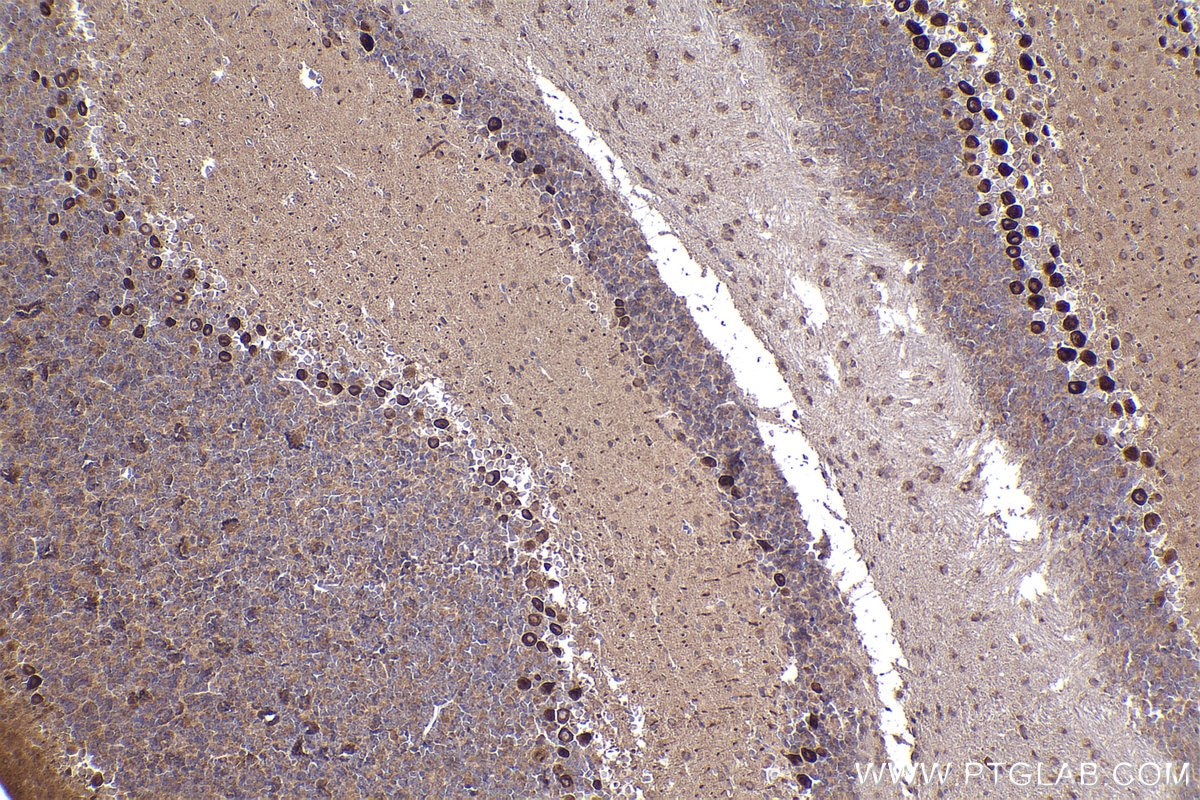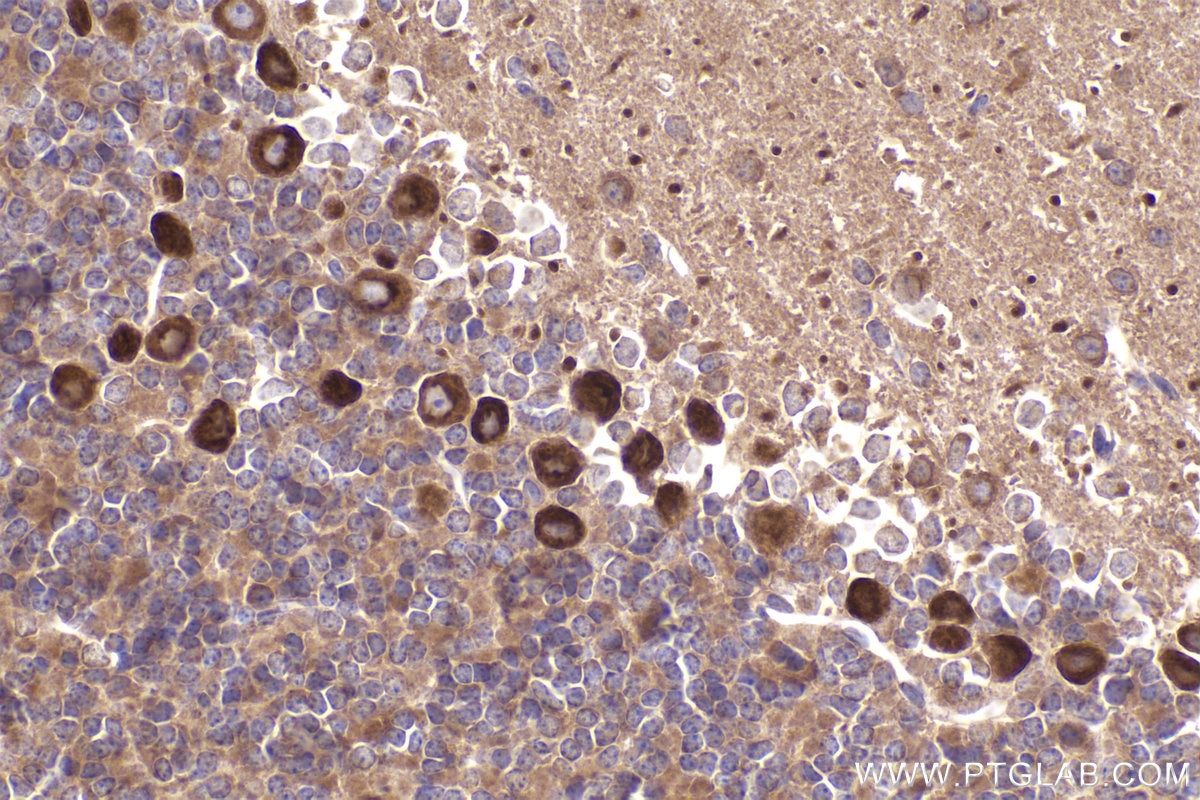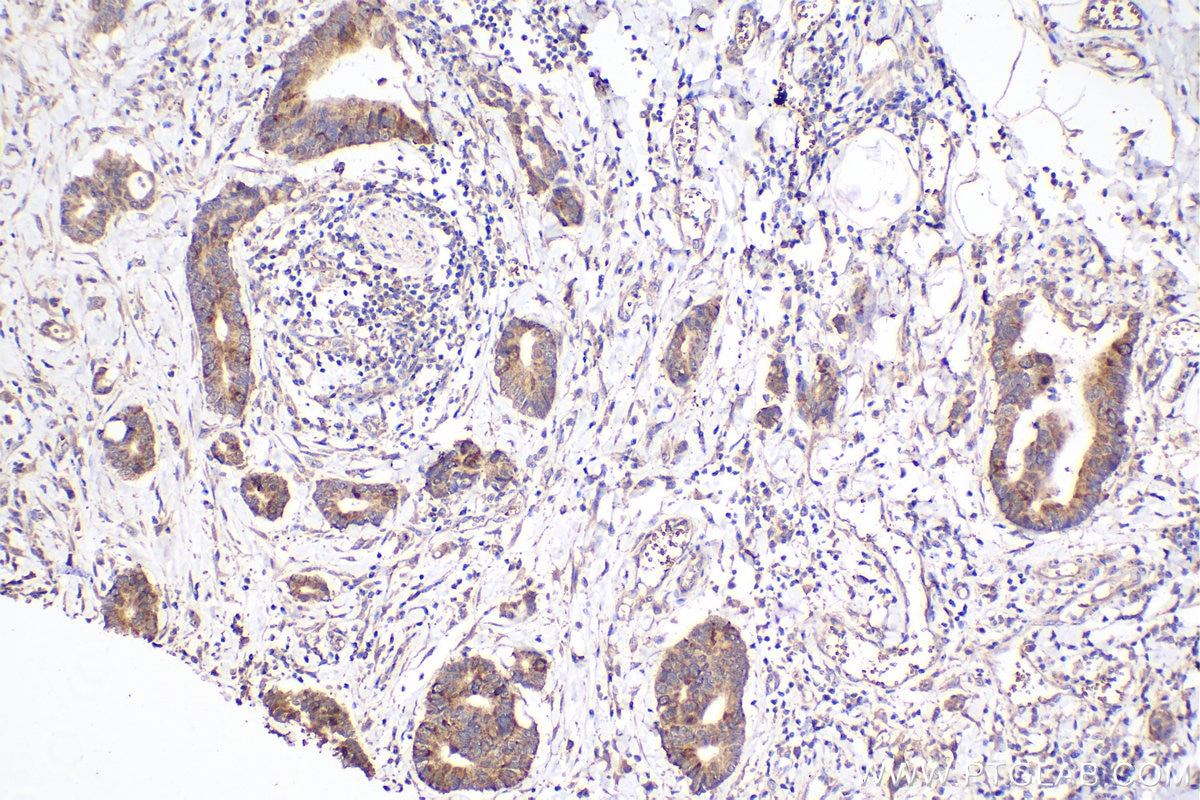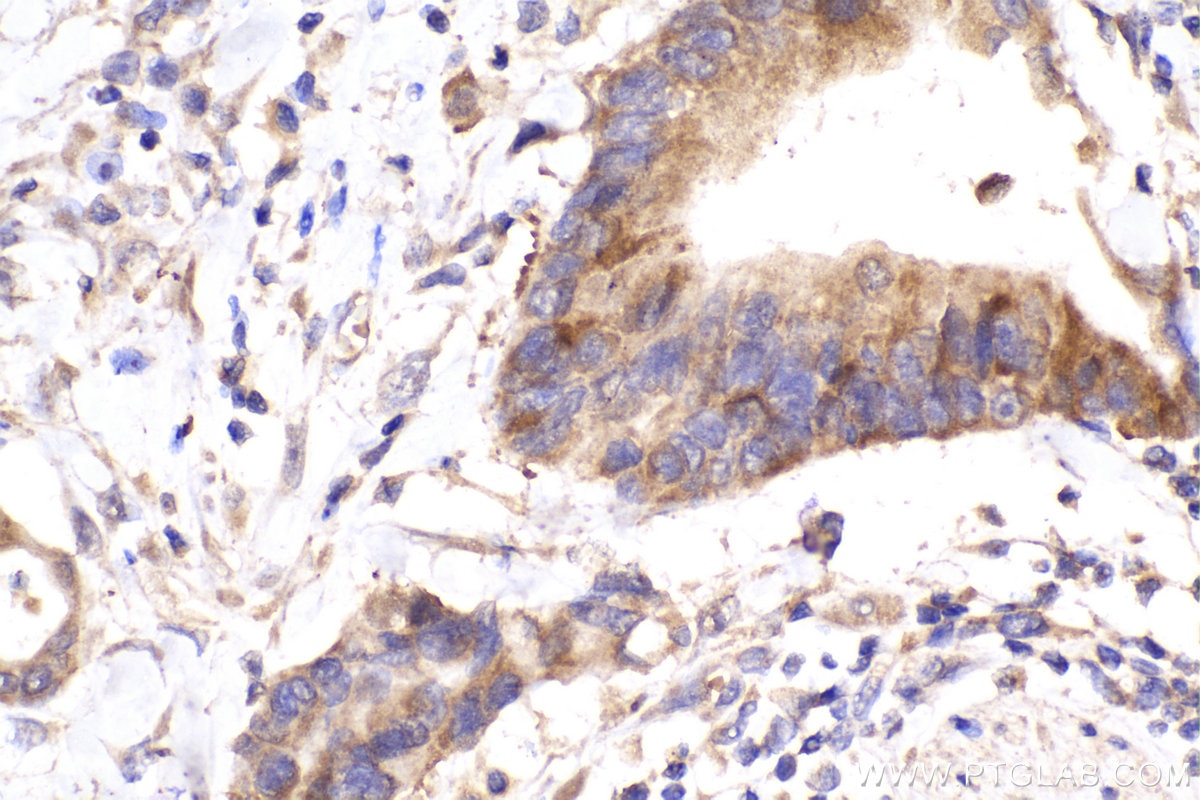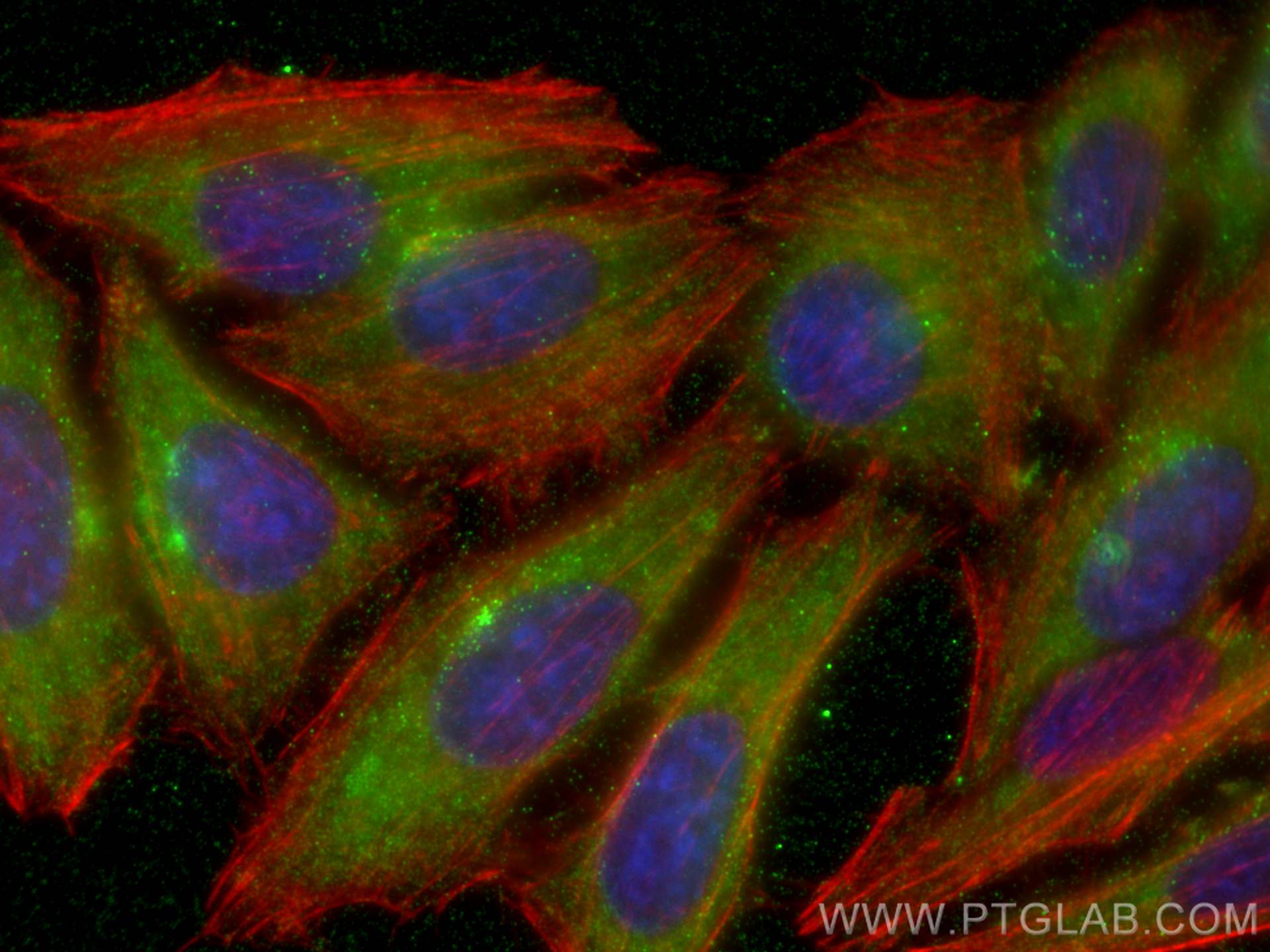Ch-TOG Monoklonaler Antikörper
Ch-TOG Monoklonal Antikörper für WB, IHC, IF/ICC, ELISA
Wirt / Isotyp
Maus / IgG1
Getestete Reaktivität
Hausschwein, human, Maus, Ratte
Anwendung
WB, IHC, IF/ICC, ELISA
Konjugation
Unkonjugiert
CloneNo.
1H5G1
Kat-Nr. : 67631-1-Ig
Synonyme
Geprüfte Anwendungen
| Erfolgreiche Detektion in WB | Hausschwein-Hirngewebe, HeLa-Zellen, HepG2-Zellen, Maushirngewebe, NCCIT-Zellen, Rattenhirngewebe |
| Erfolgreiche Detektion in IHC | Maus-Cerebellum-Gewebe, human rectal cancer tissue Hinweis: Antigendemaskierung mit TE-Puffer pH 9,0 empfohlen. (*) Wahlweise kann die Antigendemaskierung auch mit Citratpuffer pH 6,0 erfolgen. |
| Erfolgreiche Detektion in IF/ICC | HepG2-Zellen |
Empfohlene Verdünnung
| Anwendung | Verdünnung |
|---|---|
| Western Blot (WB) | WB : 1:5000-1:50000 |
| Immunhistochemie (IHC) | IHC : 1:250-1:1000 |
| Immunfluoreszenz (IF)/ICC | IF/ICC : 1:2000-1:8000 |
| It is recommended that this reagent should be titrated in each testing system to obtain optimal results. | |
| Sample-dependent, check data in validation data gallery | |
Produktinformation
67631-1-Ig bindet in WB, IHC, IF/ICC, ELISA Ch-TOG und zeigt Reaktivität mit Hausschwein, human, Maus, Ratten
| Getestete Reaktivität | Hausschwein, human, Maus, Ratte |
| Wirt / Isotyp | Maus / IgG1 |
| Klonalität | Monoklonal |
| Typ | Antikörper |
| Immunogen | Ch-TOG fusion protein Ag28770 |
| Vollständiger Name | cytoskeleton associated protein 5 |
| Beobachtetes Molekulargewicht | 220-240 kDa |
| GenBank-Zugangsnummer | BC120869 |
| Gene symbol | Ch-TOG |
| Gene ID (NCBI) | 9793 |
| Konjugation | Unkonjugiert |
| Form | Liquid |
| Reinigungsmethode | Protein-G-Reinigung |
| Lagerungspuffer | PBS with 0.02% sodium azide and 50% glycerol |
| Lagerungsbedingungen | Bei -20°C lagern. Nach dem Versand ein Jahr lang stabil Aliquotieren ist bei -20oC Lagerung nicht notwendig. 20ul Größen enthalten 0,1% BSA. |
Hintergrundinformationen
Ch-TOG (colonic hepatic tumor-overexpressed gene), also known as XMAP215 or CKAP5, is a microtubule polymerase which can promotes cytoplasmic microtubule nucleation and elongation. Through interacting with Aurora-A and TACC3, it plays a major role in organizing spindle poles.
Protokolle
| PRODUKTSPEZIFISCHE PROTOKOLLE | |
|---|---|
| WB protocol for Ch-TOG antibody 67631-1-Ig | Protokoll herunterladen |
| IHC protocol for Ch-TOG antibody 67631-1-Ig | Protokoll herunterladenl |
| IF protocol for Ch-TOG antibody 67631-1-Ig | Protokoll herunterladen |
| STANDARD-PROTOKOLLE | |
|---|---|
| Klicken Sie hier, um unsere Standardprotokolle anzuzeigen |
